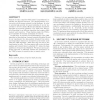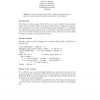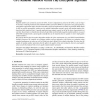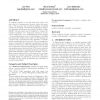7 search results - page 1 / 2 » TEA, a Tiny Encryption Algorithm |
ACMSE
2004
ACM
13 years 10 months ago
2004
ACM
Sensors are tiny computers with limited computational capability and physical resources. The implementation of secure protocols for sensor network is a big challenge. In order to ...
FSE
1994
Springer
13 years 8 months ago
1994
Springer
We give a short routine which is based on a Feistel iteration and uses a large number of rounds to get security with simplicity.
EGH
2010
Springer
13 years 2 months ago
2010
Springer
Random numbers are extensively used on the GPU. As more computation is ported to the GPU, it can no longer be treated as rendering hardware alone. Random number generators (RNG) a...
LPAR
2005
Springer
13 years 10 months ago
2005
Springer
Abstract. We discuss a collection of mechanized formal proofs of symmetric key block encryption algorithms (AES, MARS, Twofish, RC6, Serpent, IDEA, and TEA), performed in an imple...
ACL2
2006
ACM
13 years 10 months ago
2006
ACM
A verifying compiler is one that emits both object code and a proof of correspondence between object and source code.1 We report the use of ACL2 in building a verifying compiler f...




